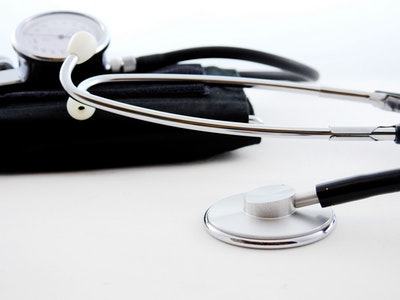How fast does a heart pump blood?

Stethoscope (Pexels)

Stethoscope (Pexels)
How does this align with my curriculum?
Get active in this activity and explore the impact of exercise on your heart rate. Ready, set, GO!
What You Need
- Paper
- Pencil or pen
- Stopwatch
What To Do
- Find your pulse on your neck. Try putting your fingers below your ear lobe and slowly moving down your jaw bone until you feel a pulse. Alternatively, find your Adam's apple and gently feel on either side of it until you feel a pulse.
- Using the stopwatch, count your heartbeats for 30 seconds. Multiply this number by 2 to get your heart rate (beats per minute). Record your heart rate on a piece of paper. A normal pulse rate for a healthy adult is from 60-100 beats per minute (bpm), while babies have pulse rates up to 120 bpm and children range from 80-160 bpm.
- Now, do a quick walk around the room. Take your pulse again for 30 seconds. Multiply this number by 2 and record your new heart rate below your initial measurement. What do you notice about the two heart rates?”
Using the stopwatch, jog in place (or do some jumping jacks) for 30 seconds, then repeat your pulse measurement as before and record this new heart rate below your other two measurements. What has happened?
Discovery
A pulse is the movement of blood through arteries. When you take your pulse at your neck, you are feeling for the movement of blood through the carotid artery. When the heart beats, it sends blood into the arteries, stretching the walls of these vessels. Between beats, blood moves along and the arterial walls shrink back to their normal size. This stretching and shrinking with heart beats is what you feel when you take a pulse.
When you exercise, your muscles need more oxygen; therefore, your heart needs to pump more blood to supply them with oxygen. This is why you feel the pulse increase after exercising.
The heart is a muscle. Just like any other muscles, hearts need to be exercised in order to stay strong and healthy. Heart disease, known as cardiovascular disease to scientists and doctors, mainly affects older people and can involve problems with the heart and the blood vessels. However, being physically active now can help to prevent heart disease in the future!
- Take the pulse rate of members of your family. How are they similar and/or different?
For more information on this topic check out these Let's Talk Science resources:
- How much air do I breathe in? (Hands-on Activities) - Learn how to measure lung capacity and about the factors that can affect our lung capacity in this hands on activity.
- Stethoscope Replica (Interactives) - Using stethoscopes, doctors can use sound waves to detect various health issues. Learn how this device has evolved since it was invented in 1816!
What’s happening?
A pulse is the movement of blood through arteries. When you take your pulse at your neck, you are feeling for the movement of blood through the carotid artery. When the heart beats, it sends blood into the arteries, stretching the walls of these vessels. Between beats, blood moves along and the arterial walls shrink back to their normal size. This stretching and shrinking with heart beats is what you feel when you take a pulse.
When you exercise, your muscles need more oxygen; therefore, your heart needs to pump more blood to supply them with oxygen. This is why you feel the pulse increase after exercising.
Why does it matter?
The heart is a muscle. Just like any other muscles, hearts need to be exercised in order to stay strong and healthy. Heart disease, known as cardiovascular disease to scientists and doctors, mainly affects older people and can involve problems with the heart and the blood vessels. However, being physically active now can help to prevent heart disease in the future!
Investigate further
- Take the pulse rate of members of your family. How are they similar and/or different?
For more information on this topic check out these Let's Talk Science resources:
- How much air do I breathe in? (Hands-on Activities) - Learn how to measure lung capacity and about the factors that can affect our lung capacity in this hands on activity.
- Stethoscope Replica (Interactives) - Using stethoscopes, doctors can use sound waves to detect various health issues. Learn how this device has evolved since it was invented in 1816!